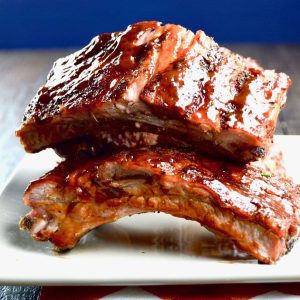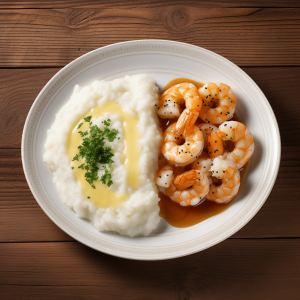
Sweet Tea & Southern Hospitality: Recipes & Traditions – A Deep Dive into the South’s Beloved Beverage
The aroma of sweet tea, thick and syrupy, hangs heavy in the air, a fragrant promise of Southern hospitality. More than just a drink, it’s a cultural cornerstone, a symbol woven into the fabric of life below the Mason-Dixon line. This isn’t your typical iced tea; it’s a potent elixir, brewed strong and sweetened generously, a comforting ritual passed down through generations. This article delves into the heart of sweet tea, exploring its history, variations, and the inextricable link it shares with Southern charm.
A History Steeped in Tradition:
The origins of sweet tea aren’t precisely documented, but its rise coincides with the widespread adoption of iced tea in the late 19th and early 20th centuries. The South, with its hot and humid climate, embraced iced tea with gusto. The addition of sugar – a readily available commodity – transformed it from a refreshing beverage into a truly Southern staple. Unlike the delicate, subtly sweetened teas favored elsewhere, Southern sweet tea is bold, assertive, and intensely flavorful. It’s a testament to the region’s rich agricultural heritage and its embrace of abundant sweetness. This wasn’t just a thirst quencher; it was a symbol of generosity, a way to welcome guests and foster a sense of community.
The Art of Brewing the Perfect Glass:
The key to truly exceptional sweet tea lies in the brewing process. Forget those tea bags; true Southern sweet tea demands loose-leaf tea, preferably a robust black tea like strong Assam or a blend specifically designed for iced tea. The brewing method itself is crucial. A strong brew is essential, as the ice will significantly dilute the flavor. Many prefer a long steep, even leaving the tea to steep in the hot water for several hours, resulting in a deeply flavorful liquid.
| Tea Type | Brewing Time (hot) | Sweetness Level | Notes |
|---|---|---|---|
| Strong Assam | 5-7 minutes | Very Sweet | Bold, malty flavor |
| Black Tea Blend | 8-10 minutes | Moderately Sweet | Balanced, refreshing |
| Earl Grey | 4-5 minutes | Lightly Sweet | Citrusy notes, subtle sweetness |
Beyond the Basics: Sweet Tea Variations:
While the classic recipe reigns supreme, Southern creativity knows no bounds. Variations abound, reflecting the region’s diverse culinary landscape:
- Peach Sweet Tea: Infused with fresh or frozen peaches, offering a delightful fruity twist.
- Strawberry Sweet Tea: A summery delight, with the sweetness of strawberries complementing the tea.
- Lemon Sweet Tea: A refreshing counterpoint to the intense sweetness, adding a zesty tang.
- Spiced Sweet Tea: Cinnamon sticks, cloves, and star anise add warmth and complexity, perfect for cooler months.
Sweet Tea and Southern Hospitality: An Unbreakable Bond:
The connection between sweet tea and Southern hospitality runs deep. Offering a guest a tall glass of freshly brewed sweet tea is a gesture of warmth and welcome, a simple act that speaks volumes. It’s an invitation to relax, to linger, and to engage in conversation – the essence of Southern charm. Sharing a glass of sweet tea on a porch swing, under the shade of ancient oaks, is an experience that encapsulates the spirit of the South. It’s a symbol of community, a reminder of slower times, and a testament to the enduring power of simple pleasures.
Recipes:
Classic Southern Sweet Tea:
- 4 cups water
- 1 cup granulated sugar
- 4-6 family size tea bags (strong black tea) or 1/2 cup loose leaf black tea.
Instructions:
- Bring water to a boil.
- Add sugar and stir until dissolved.
- Add tea bags/loose leaf tea and steep for 5-7 minutes (adjust based on desired strength).
- Remove tea bags/strain tea.
- Pour over ice.
Peach Sweet Tea:
Follow the classic recipe, adding 2-3 sliced peaches to the brewing process.
The legacy of sweet tea transcends mere refreshment; it’s a vibrant tapestry woven from history, hospitality, and the enduring spirit of the South. It’s a taste of home, a symbol of welcome, and a legacy that continues to be brewed and shared, one sweet glass at a time.

Additional Information
Sweet Tea & Southern Hospitality: A Deeper Dive into Recipes, Traditions, and Cultural Significance
The seemingly simple concept of “Sweet Tea & Southern Hospitality” belies a rich tapestry of interwoven culinary, social, and historical threads. While a cookbook might focus on recipes and their variations, a deeper analysis reveals the significance of this pairing as a potent symbol of Southern identity and culture. This analysis will delve into several key aspects: the evolution of sweet tea’s recipe, its connection to social rituals, its economic impact, and its evolving role in contemporary Southern culture.
1. The Evolution of the Sweet Tea Recipe: A Reflection of Changing Times:
The precise origins of sweet tea remain debated, but its rise to prominence correlates with the widespread availability of iced refrigeration in the early 20th century. Before this, iced beverages were less common, and the sweetness served as a preservative, extending the lifespan of brewed tea. Early recipes likely varied considerably across households, reflecting regional preferences and the availability of sweeteners (cane sugar, honey, molasses). The standardization we see today—strong brewed tea, copious amounts of sugar, and ice—is a relatively recent phenomenon. This standardization, however, didn’t eliminate regional variations. For instance, some regions favor a lighter brew, while others prefer a more robust, almost syrupy concoction. Analyzing these variations provides insights into local agricultural practices and cultural preferences across the Southern United States.
2. Sweet Tea and Social Rituals: More Than Just a Drink:
Sweet tea transcends its function as a beverage; it’s a cornerstone of Southern hospitality and social interactions. Serving sweet tea signifies welcome, generosity, and a willingness to connect with guests. This ritualistic aspect is deeply ingrained in Southern culture, creating a sense of community and shared experience. This is evident in numerous social settings:
- Family gatherings: Sweet tea is ubiquitous at family reunions, barbecues, and potlucks, fostering a sense of togetherness and shared heritage.
- Church functions: Sweet tea is a staple at church socials, picnics, and after-service gatherings, reinforcing community bonds within religious groups.
- Commercial establishments: Restaurants, cafes, and diners often use sweet tea to create a welcoming and familiar atmosphere, connecting with their customers’ cultural expectations.
3. Economic Impact: From Backyard to Big Business:
The seemingly simple act of making sweet tea has a significant economic impact. The demand for tea leaves, sugar, and ice contributes to local and regional economies. Furthermore, the popularity of sweet tea has led to the creation of numerous commercial brands, contributing to the beverage industry’s overall revenue. While precise statistics are difficult to obtain comprehensively, analyzing sales figures of bottled sweet tea and the tea industry’s overall economic contributions to Southern states can provide a clear picture of its financial significance. Case studies of successful sweet tea businesses can highlight the economic opportunities linked to this cultural phenomenon.
4. Sweet Tea in Contemporary Southern Culture: Adaptation and Evolution:
While sweet tea remains a cherished tradition, its role in contemporary Southern culture is evolving. Health consciousness has led to the emergence of variations, such as unsweetened or low-sugar sweet tea options. The fusion of traditional Southern recipes with contemporary tastes is visible in the creation of innovative cocktails and tea-based desserts. Analyzing these adaptations reveals a dynamic interplay between cultural preservation and the changing preferences of a younger generation. The rise of social media and its role in showcasing sweet tea recipes and cultural experiences further contributes to this ongoing evolution.
Conclusion:
Sweet Tea & Southern Hospitality is more than a collection of recipes; it’s a reflection of a rich cultural heritage. By examining the historical evolution, social rituals, economic impact, and contemporary adaptations of sweet tea, we gain a deeper understanding of its significance as a powerful symbol of Southern identity and its enduring influence on the region’s culture and economy. Future research could focus on quantifying the economic impact, conducting ethnographic studies on sweet tea rituals, and exploring its role in shaping the evolving Southern identity in a globalized world.






